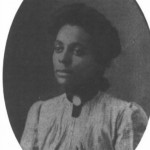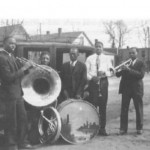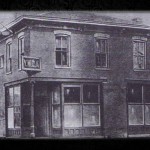Middle-class women, both black and white, were active in the Progressive Era’s many reform movements. Popularly known as “Municipal Housekeepers,” these women were often educated and socially prominent.
They found meaningful volunteer work educating the public on quality-of-life issues such as literacy, sanitation, and temperance, and in other community service endeavors. Many clubwomen were ardent suffragists. Many were also staunch volunteers for the Allied cause during the First World War, doing what they could on the home front to help soldiers and their families.
Of course, for African-American “clubwomen,” as they were often known, there were additional social problems to address, including discrimination, segregation, and lynching. In Indianapolis, the Woman’s Improvement Club, or WIC, was a small and exclusive group of twenty black women who participated in activities such as these in the early twentieth century.
Even though it was founded as a literary club in 1903, the most important work of the WIC was related to health care—especially the care that black people afflicted with tuberculosis received—or didn’t receive. Poor housing and health conditions in the black community in particular compelled the Woman’s Improvement Club to focus on the fight against tuberculosis.
At the turn of the century, an estimated five thousand Hoosiers died of the disease each year. In Indianapolis, when the Flower Mission Society opened a 25-bed TB unit on the grounds of the City Hospital in 1903, it was open to white patients only. The Marion County Society for the Study and Prevention of Tuberculosis was formed in 1913, and helped open a fresh air school for students afflicted with TB—but only for white students. The County opened the Sunnyside Sanatorium in its far northeastern corner in 1917; that facility boasted eighty beds for TB patients. But Sunnyside only admitted nineteen black patients in 1918, even though three-fourths of the TB cases in the state were black.
Marion County would not allocate any public funds to address TB in the black community until 1919—but by that time, the Woman’s Improvement Club had been working hard to manage tuberculosis among the city’s black population for some fourteen years, independent of any public funding or assistance. The clubwomen worked with the Flanner Guild, a settlement house in the black community, to provide free care for TB patients. They formed a nurses’ training class for black women, taught by the head nurse from City Hospital.
And they founded the Oak Hill Camp in 1905—reputed to be the first outdoor tuberculosis camp in the United States. The Camp operated in the summer months only and relied on donations of both money and materials from white and black individuals and community organizations such as churches, theatres, and even grocery stores.
When the camp closed in 1916, members of the WIC turned to home nursing, social work, and educational programs which could be carried out on a year-round basis. The clubwomen were also successful in opening a fresh air school for black students with TB in 1916—a room converted for this use at Public School 24.
Two years later, in 1918, the WIC persuaded the Flower Mission Hospital to add a room for black TB patients. Later generations of clubwomen would continue to pressure local hospitals to treat black patients with advanced cases of tuberculosis until finally, in 1938, the Flower Mission provided a segregated ward in its new hospital on Fall Creek Boulevard. This hospital would become the Bell Flower Clinic.
The women of Indianapolis’s small but powerful WIC left behind a record of amazing accomplishments in the first decades of the twentieth century. Although those years were marred by racism, segregation, and discrimination, the clubwomen were determined not to let those barriers stop them in their drive to provide adequate health care for black families dealing with tuberculosis.
A Moment of Indiana History is a production of WFIU Public Radio in partnership with the Indiana Public Broadcasting Stations. Research support comes from Indiana Magazine of History published by the Indiana University Department of History.
Source article: Earline Rae Ferguson, “The Woman’s Improvement Club of Indianapolis: Black Women Pioneers in Tuberculosis Work, 1903-1938.” Indiana Magazine of History 84, no. 3 (Sept. 1988): 237-261.






















